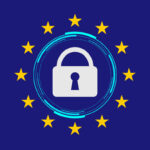Employee browser activity creates a security blindspot

Thanks to a growth in remote working and the use of SaaS applications enterprise reliance on browsers is growing, but this leaves them open to risks stemming from dangerous employee web behavior.
According to a cybersecurity expert at network security platform NordLayer, some employee activity that may go undetected by security teams can result in confidential data and industry secrets leaks or violations of GDPR.
What is an AI agent and why should you build one?

AI agents are having a moment. From automating customer service to optimizing supply chains, AI agents are constantly promising to transform how organizations operate -- faster, smarter and more efficiently. In fact, recent research from Salesforce shows that 93 percent of IT leaders plan to implement AI agents in the next two years. But what exactly is an AI agent?
An AI agent is a software system that can autonomously perform tasks like answering customer inquiries and translating documents in multiple languages, improving overall efficiency and customer experience. Unlike traditional automation tools that follow static rules, AI agents continuously learn from data and adapt to changing conditions to make decisions on their own, in real time. That’s what makes AI agents powerful and risky.
What does the future of AI-powered software development look like -- and how secure is it?

AI and machine learning tools have had an important role in software development for many years, helping to drive efficiency and automation. The new generation of AI tools has the potential to supercharge this transformation, bringing even greater improvements to efficiency, cost-effectiveness, and innovation cycles.
However, these tools also come with new risks, including security vulnerabilities, governance challenges, and regulatory uncertainty. As with any new technological approach, organizations bringing new AI tools and specifically AI-generated code into their development lifecycles must balance benefits with the potential risks.
Four common AI pitfalls -- and how to avoid them

Artificial intelligence (AI) is transitioning from an emerging technology to a business mainstay. While many businesses are already reaping the benefits of strategic AI implementation, others are adopting AI solutions without first considering how to integrate the tools strategically. While some AI tools offer tangible gains in automation and efficiency, others overpromise and underdeliver, leading to costly investments with little return.
Distinguishing marketing buzz from real-world impact is critical for businesses looking to make AI a true driver of operational success. Despite AI’s potential, many businesses fall into common pitfalls that prevent them from realizing the full value of innovative technology. From unclear objectives to poor integration and security risks, these challenges can turn AI from a competitive advantage into an expensive mistake.
What compliance with PCI DSS 4.0.1 means for businesses [Q&A]

The latest revision to the PCI DSS standard for protecting payment data, PCI DSS 4.0.1, was announced last year and came into force last month.
But what do these new requirements mean for businesses? We spoke to Simon Wijckmans, CEO at web security platform c/side, to find out.
Is AI adoption the next great risk to data resilience?

With cyberattacks surging across every sector from critical national infrastructure to commercial businesses, it’s never been more vital for organizations to get control of their digital footprint and restrict access to their most sensitive data. Instead, organizations are being pulled in the opposite direction by AI, which is demanding access to as much data as possible to deliver much-hyped business solutions.
Organizations worldwide are pouring resources into AI innovation, with spending set to hit an astronomical $632 billion by 2028, according to Gartner. Some are even redesigning their organizational structure, introducing new AI-focused roles and even rerouting workflows as they deploy generative AI into day-to-day operations. At the same time, AI organizations are generating unthinkable amounts of investment with OpenAI raising another $40 billion already this year. It’s clear that AI is here to stay, but have organizations lost sight of their data resilience in a bid to keep up with the AI race?
The core pillars of cyber resiliency

As we enter a new era of cybersecurity threats, which has prompted the evolution of new vulnerabilities, organizations are challenged on how to best respond to these evolving attacks. The threat landscape is more complex than ever causing organizations to grapple with new tactics to safeguard their critical data.
In 2024, ransomware surged rapidly in acceleration and sophistication, accounting for 23 percent of all intrusions in 2023 compared with 18 percent in 2022 according to Mandiant’s annual M-Trends report. Since the introduction of AI, the ability to automate its deployment can also be attributed to its exponential growth. Most notably, increasing its attack surface to target critical infrastructure, sensitive data, and operational capabilities.
Seamless migration: Moving on-prem mailboxes to the cloud

Since 2020, most businesses have shifted their Microsoft Exchange mailboxes to the cloud. As of 2023, just 16 percent of Microsoft Exchange mailboxes operated on-premises -- a clear indication that organizations are seeking the improved scalability, reliability, and cost efficiency of cloud-based solutions.
However, migrations from on-prem mailboxes can be challenging. They can disrupt business operations, present security risks, and create compliance challenges. Without proper migration planning, businesses face significant vulnerabilities and risks. On top of this, support continues to diminish for various platforms. Just recently, Microsoft announced its sunsetting support for Exchange 2016 and 2019 later this year.
Top 10 data security best practices for 2025

2024 ushered in one of the biggest shifts in data security, as cyber threats continued to increase in sophistication by leveraging advancements in AI to outpace traditional defenses. High-profile breaches across all industries continued, uncovering vulnerabilities in even the most robust systems. Meanwhile, the ongoing hybrid work models and migration to cloud-based technologies expanded the attack surface, creating new challenges for protecting sensitive data.
As 2025 rolls on, organizations need to follow best practices that represent a proactive, forward-thinking framework to stay ahead of emerging threats, protect critical data, and maintain the trust of their stakeholders. Here are ten best practices that organizations should consider.
Navigating NIS 2 compliance [Q&A]

As the European Union updated the Network and Information Security (NIS 2) Directive in October last year, many companies were asking: what does it take to comply with this sweeping new regulation? Designed to tighten cybersecurity across critical industries, NIS 2 goes beyond the original directive’s framework, bringing strict rules, wider sectoral reach, and substantial penalties.
We spoke to Sam Peters, chief product officer at isms.online, to find out what businesses need to know to ensure compliance and understand the directive's impact on both operations and reputation.
Shaping the future of cloud security with CNAPP [Q&A]

As cloud environments become complex, security teams face increasing challenges in detecting, prioritizing, and addressing risks.
While cloud security posture management (CSPM) tools were created to provide visibility into cloud configurations and cloud workload protection platforms (CWPP) to manage threats to cloud workloads, they created gaps in providing holistic context that enables efficient risk management and didn't extend across the full software development life cycle (SDLC).
Meta will continue to use fact checkers -- for now, at least, and only outside of the US

When Mark Zuckerberg announced recently that Meta was ditching fact checking on Facebook and Instagram in favor of X-style community notes, the response was very mixed. While hardly a clean line between the two camps, those with conservative political leanings tended to see this as a good thing, while those of a more liberal bent voiced concerns about the potential for misinformation.
The recent announcement about moving away from fact checking was widely seen as Zuckerberg trying to curry favor with Donald Trump, now installed as the 47th president of the USA. Now a new pronouncement from the company makes it hard to shake the notion that stepping away from fact checking was a politically motivated move.
Key developments and challenges in LLMs [Q&A]

Large language models (LLMs) have undergone rapid evolution in recent years, but can often be viewed as something of a 'black-box' as a lack of transparency makes it difficult to identify how decisions are made, trace errors, or understand biases within the model.
We spoke to Pramod Beligere, vice president -- generative AI practice head at Hexaware, to discuss this along with the tools that are being developed, such as explainable AI and interpretable models, to make AI systems more understandable, trustworthy and accountable.
Navigating challenges and opportunities of cloud migrations in 2025

As 2025 approaches, the role of cloud migrations in organizational strategy continues to intensify. In our current era of accelerated digital transformation, businesses face the dual challenge of optimizing their operations and navigating complex compliance requirements.
Cloud technologies stand at the forefront of this transformation, offering scalability, operational flexibility, and data management capabilities that are essential for success in today’s digital economy. In addition, the evolution of data sovereignty laws requires businesses to adjust how they handle and store data and evaluate the infrastructures that support their global operations.
Europe's move toward cybersecurity sovereignty [Q&A]

Governments around the world are increasingly legislating for cybersecurity and privacy. But regions often have differing views on how this should be achieved.
We spoke to Christian Have, CTO of Logpoint, to get insight into how US surveillance laws could serve as a catalyst for Europe to take greater control over its data, pushing forward the concept of digital sovereignty.
© 1998-2025 BetaNews, Inc. All Rights Reserved. About Us - Privacy Policy - Cookie Policy - Sitemap.